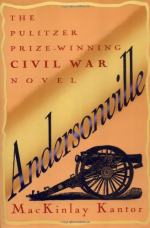I observed also numerous cases of hospital gangrene, and of spreading scorbutic ulcers, which had supervened upon slight injuries. The scorbutic ulcers presented a dark, purple fungoid, elevated surface, with livid swollen edges, and exuded a thin; fetid, sanious fluid, instead of pus. Many ulcers which originated from the scorbutic condition of the system appeared to become truly gangrenous, assuming all the characteristics of hospital gangrene. From the crowded condition, filthy habits, bad diet, and dejected, depressed condition of the prisoners, their systems had become so disordered that the smallest abrasion of the skin, from the rubbing of a shoe, or from the effects of the sun, or from the prick of a splinter, or from scratching, or a musketo bite, in some cases, took on rapid and frightful ulceration and gangrene. The long use of salt meat, ofttimes imperfectly cured, as well as the most total deprivation of vegetables and fruit, appeared to be the chief causes of the scurvy. I carefully examined the bakery and the bread furnished the prisoners, and found that they were supplied almost entirely with corn-bread from which the husk had not been separated. This husk acted as an irritant to the alimentary canal, without adding any nutriment to the bread. As far as my examination extended no fault could be found with the mode in which the bread was baked; the difficulty lay in the failure to separate the husk from the corn-meal. I strongly urged the preparation of large quantities of soup made from the cow and calves’ heads with the brains and tongues, to which a liberal supply of sweet potatos and vegetables might have been advantageously added. The material existed in abundance for the preparation of such soup in large quantities with but little additional expense. Such aliment would have been not only highly nutritious, but it would also have acted as an efficient remedial agent for the removal of the scorbutic condition. The sick within the Stockade lay under several long sheds which were originally built for barracks. These sheds covered two floors which were open on all sides. The sick lay upon the bare boards, or upon such ragged blankets as they possessed, without, as far as I observed, any bedding or even straw.
............................
The haggard, distressed countenances of these miserable, complaining, dejected, living skeletons, crying for medical aid and food, and cursing their Government for its refusal to exchange prisoners, and the ghastly corpses, with their glazed eye balls staring up into vacant space, with the flies swarming down their open and grinning mouths, and over their ragged clothes, infested with numerous lice, as they lay amongst the sick and dying, formed a picture of helpless, hopeless misery which it would be impossible to portray bywords or by the brush. A feeling of disappointment and even resentment on account of the United States Government upon the subject of the exchange of prisoners,




